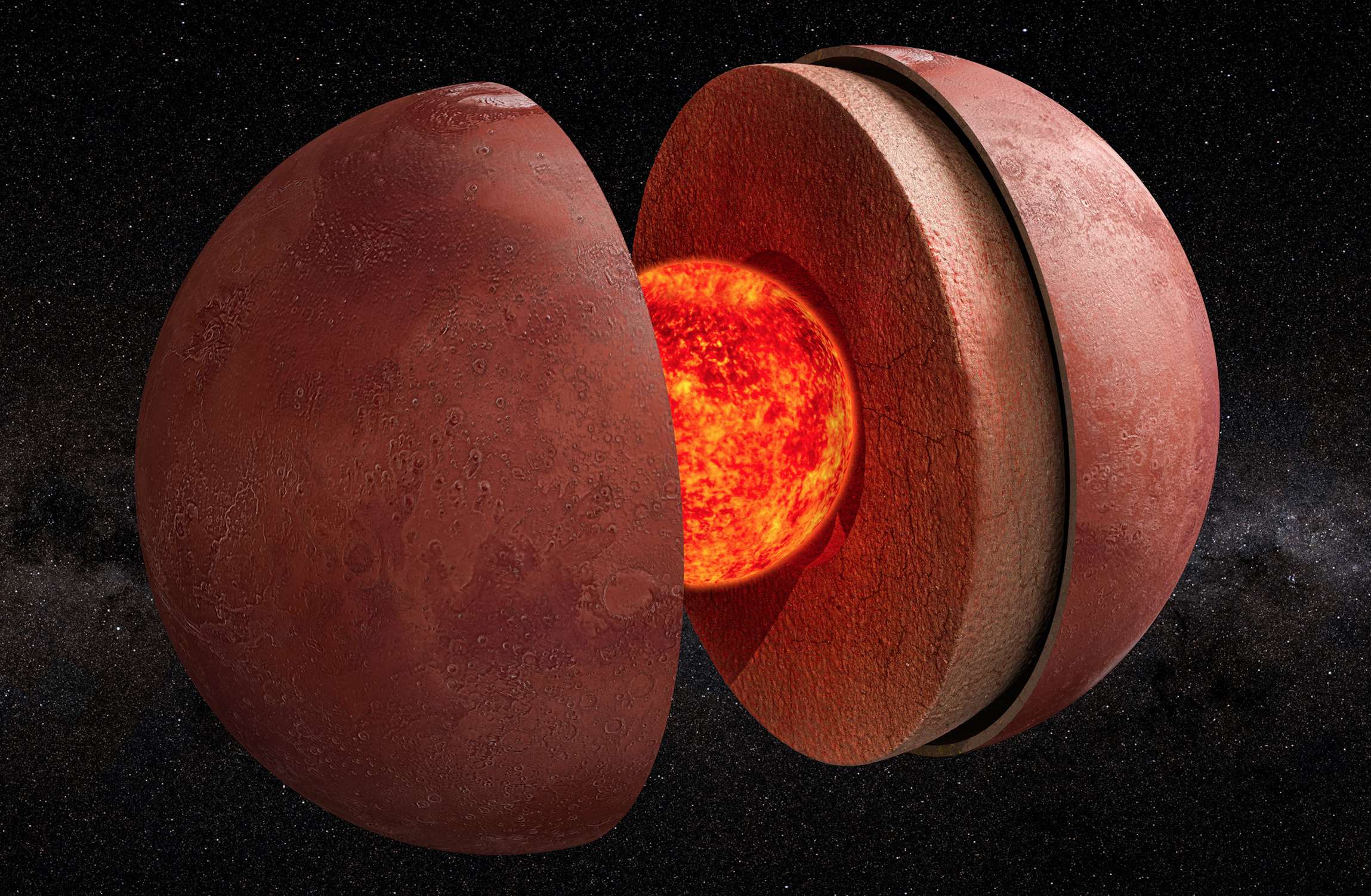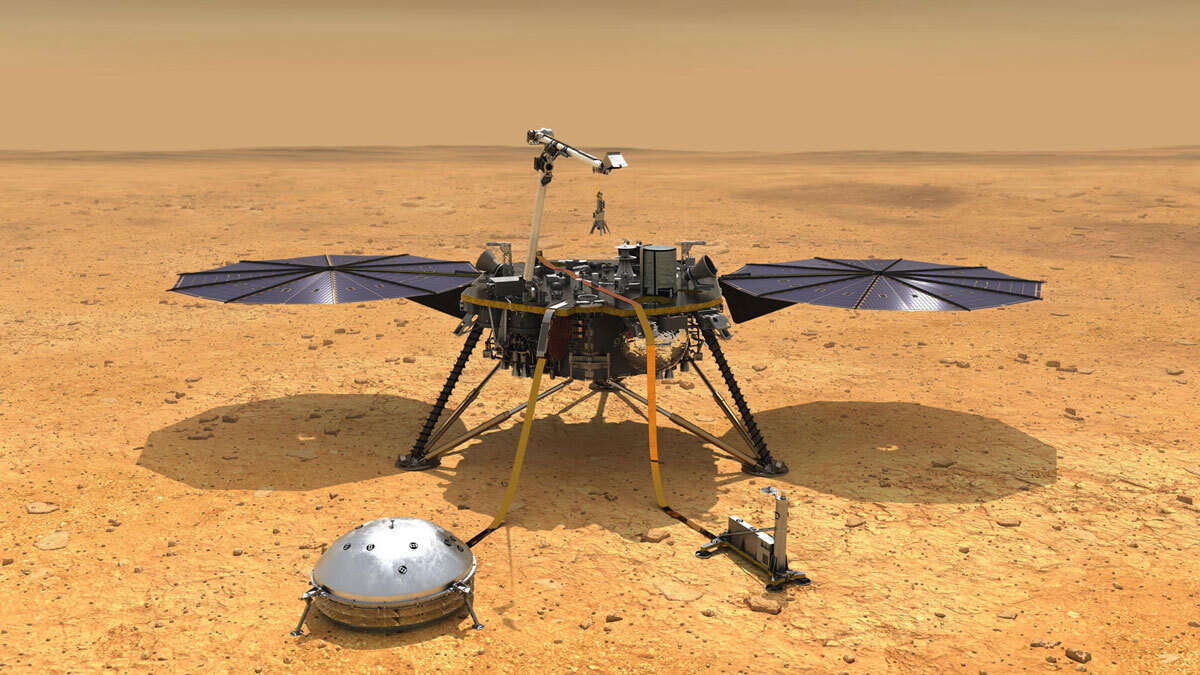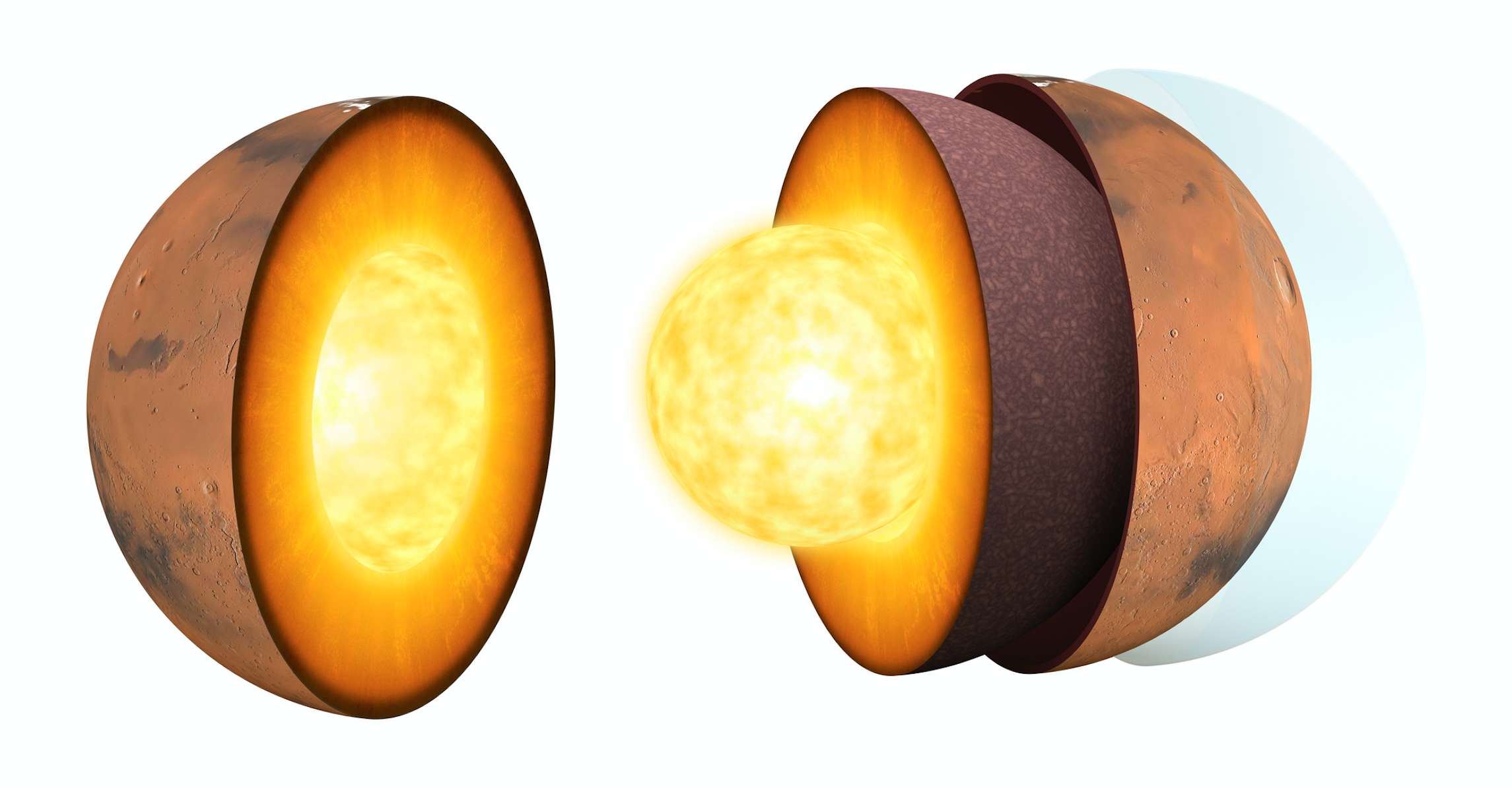Create a free profile to get unlimited access to exclusive videos, sweepstakes, and more!
NASA's Insight spacecraft measures the Red Planet's molten core for the first time

Mars has been getting a lot of attention lately with the February 18th arrival of the Perseverance rover and all its astonishing panoramic imagery of the Red Planet that we've witnessed in its first month of operation.
But another intrepid NASA spacecraft called Insight has been on the surface of Mars since November of 2018 dissecting our neighboring planet's interior, and now it's relayed back detailed information on the size of Mars' core for the first time — and it's much bigger than anticipated.
InSight scientists reported their measurements in a series of presentations last week at the virtual Lunar and Planetary Science Conference headquartered in Houston, Texas.
Based on Insight's seismographic instruments, which interpret seismic waves bounced between the planet's mantle and core, the radius of the Red Planet's heart was found to be 1,810 to 1,860 kilometres, approximately half the size of Earth’s.
Per Nature, Simon Stähler, a seismologist at the Swiss Federal Institute of Technology in Zurich, reported these interesting core numbers in a pre-recorded presentation for the March 18th online scientific conference. Stähler and his team will now deliver their data for publication in a peer-reviewed journal.
NASA's billion-dollar probe is a stationary lander parked near the Martian equator at the western edge of Elysium Planitia where it listens for and monitors 'marsquakes,' which is an apt nickname for the seismic equivalent of geologic rumblings here on Earth.
Since first dropping to the dusty red surface, Insight has recorded nearly 500 temblors, the majority of which were micro-quakes. However, almost 50 'marsquakes' have registered somewhere between magnitude 2 and 4, a shaking intense enough to provide vital feedback about Mars' interior makeup.
According to the NASA team's research, the core is far less dense than predicted, and is theorized to be made up of lighter elements like oxygen, blended with a predominance of iron and sulfur.
InSight’s new measurements will aid scientists understanding of Mars' formation and evolution, and help explain how its dense, metal-rich core divided from the surrounding rocky mantle as the planet cooled. This fiery core is likely to be still molten from Mars' genesis 4.5 billion years ago.
Earth and the Moon are the only other rocky planetary bodies that scientists have measured the core of. Now being able to add Mars to that short list will enable researchers to compare and contrast how the Solar System’s planets evolved and how Mars lost its magnetic field and atmosphere.
The mission's seismic data also predicts that Mars' upper mantle, a region extending from 700 to 800 kilometres below the surface, is infused with a dense zone of thickened material in which deep-traveling seismic energy is found to travel with reduced velocity.
















